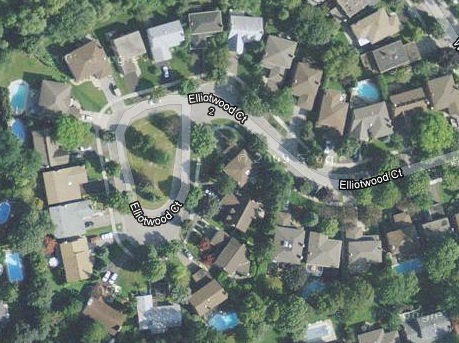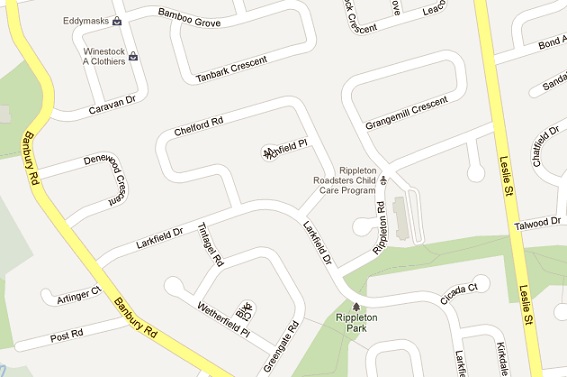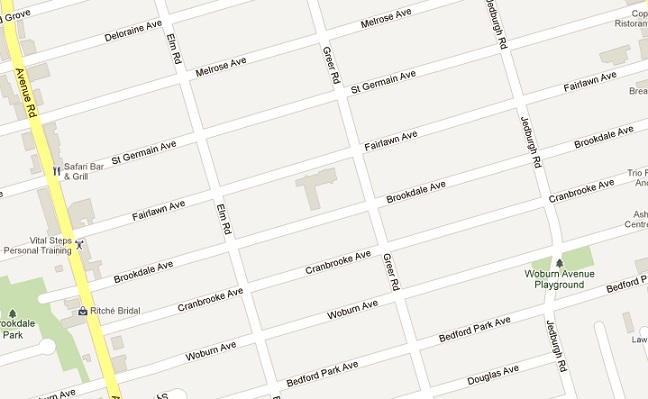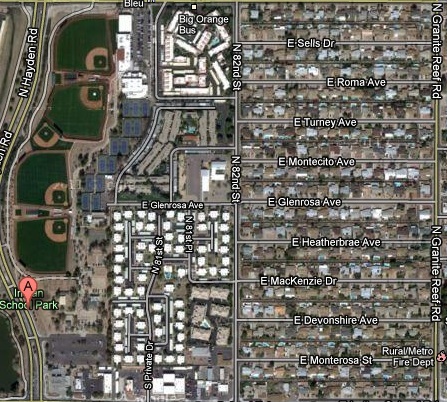A reader emailed me last week and asked, “I live on a very quiet, very exclusive court and I’m wondering how much this is worth.”
I’m not sure I can put an exact dollar value to it, but the subject warrants a discussion…

Court, Crescent, Bend, Circle, – these all refer to a street that is likely very quiet and very exclusive.
A Crescent is usually not a dead end, but bends in a circle and thus gets very little through traffic. It’s likely very quiet, and the crescent itself is a great place for your kids’ hockey net!
A Bend is essentially the same thing, but it’s a street type that we very seldom see. When was the last time you saw a “Bend?”
A Circle sounds confusing, because if it was a true circle, then you’d never escape and you’d just drive around and around until you get tired and give up! But it’s essentially the same thing as a crescent, just a little more intense.
But a Court is a true dead-end, shaped like a circle, where houses all face inward to the centre where you might find a grassy knoll, a rock garden, or in some cases, nothing but more pavement (also great for road hockey games!).
Courts are likely the most exclusive style of street, since you wouldn’t expect anybody to pull into the court unless they live on the street, or are delivering pizza.
Here is an aerial shot of a true court:

There are about a dozen houses that all face into the court, which has a grassy knoll that makes street hockey games impossible. No, I’m not obsessed with street hockey, but I think that grassy knoll serves little purpose and if a street hockey game between all the darling children on the court was in full swing during an open house, it would help the value of the property. I digress…
Courts are a rare find in real estate, and while I’m sure many of you can picture one in your head or know of somebody who lives on one, try and consider the percentages. What percentage of all streets are courts? Or what percentage of homes are located on courts?
To answer the first question, how about 1%? Is that fair? Think of how many Roads, Streets, and Avenues there are.
To answer the second question, how many actual houses are on courts? Maybe one in a thousand? Is that fair?
If that’s the case, then what value can you put on the scarcity? Is this like an old Victorian home in Bloor West that’s the only one on the street? Is it valuable simply because it’s rare? Or is it valuable because of its functionality? It’s unique, it’s quiet, it’s private, it’s safe, and I think we’ve covered the road hockey games already…
The issue is that new developments and sub-divisions don’t really design “courts.” It’s much easier to just lay things out in a grid.
Consider this area here:

This is an older area of Toronto – up at Leslie & Lawrence. The “Banbury” area is very exclusive, very expensive, and is home to several courts and many crescents. I think there’s a Grove in there as well.
Crescents provide some of the privacy and exclusivity that courts do, but they’re not quite as rare. It’s a very reasonable trade off.
Now consider an area like this:

This is Avenue & Lawrence; what you might call “Cricket Club” or “Lawrence Park.”
This area is about the same age, but it’s laid out like a grid.
Why the difference? I honestly can’t say. You’d have to go back to the 1930’s and 1940’s to figure it out.
So let’s look outside Toronto for a moment and consider something that isn’t brand new, but it’s 70 years old either.
Here is a close-up of a grid of streets in Scottsdale, Arizona:

If there’s one thing I’ve noticed about American cities that we do NOT have here in Canada, it’s their extreme organization. Everything makes sense and it’s laid out so well! “East, West, North, South.” “First, Second, Third, Fourth.” Imagine a native of New York City coming to Toronto, and coming from a place where you have 81st Street, 82nd Street, 83rd Street, and then being expected to find “Wellesley.”
They have “East 81st Street,” and on the other side of the main drag, they have “West 81st Street.” It makes so much sense!
We have “Bay Street.” Where is that in relation to “Elm Street?” You’ll just have to figure it out.
And now that I’ve strayed a bit off topic, let me come to the point: this extremely well-planned community is so well planned that everything is made almost too simple. The streets are all the same, and you can barely tell one from the next!
This is a classic sub-division where everything is laid out in the same manner, and the houses look identical. But the streets themselves are identical in everything except name. In this case, they all start with “East.” But you won’t find a court or a crescent in this developement. Nothing but right angles and 180-degree planes…
It’s like living in the movie Pleasantville, or perhaps having lemonade with the Stepford Wives.
The one thing that American sub-divisions do have to note, is their inclusion of infrastructure such as malls, commercial/retail, churches, community centres, and sporting fields. Expand that grid a bit further west and it looks like this:

My buyer-clients always describe the same “dream home” when we first meet. They use words like “quiet” and “quaint” to describe the neighbourhood and the street, and adjectives like “winding.”
All buyers want a safe, established neighbourhood, but they also hone in on the actual street itself and picture it tree-lined, winding, and full of kids chasing the ice-cream truck. Many of my buyer-clients describe a quiet crescent, or even get as specific as a “court.”
Unfortunately, I don’t think you can refine your search all the way down to a house on a court, or you’d be searching for quite some time. I often tell people, “The more specific you are, and the more needs/wants/must-have’s that you can come up with, the easier it is!” But there is such a thing as being too specific, and limiting yourself to a house on court is a good example.
It’s ultimately up to the buyer and the market in general to establish the value for a house being situated on a court, but I think it’s fair to say that the same house on a busy street for $500,000 might cost $600,000 if it were on a quiet, private, court.
Some people might say more, some might say less.
But that’s how a market works, isn’t it?































Joe Q.
at 9:15 am
“If there’s one thing I’ve noticed about American cities that we do NOT have here in Canada, it’s their extreme organization. Everything makes sense and it’s laid out so well! “
LOL — ever been to Boston?
George
at 2:21 pm
This post made me watch Rush’s “Subdivisions” music video. I am fascinated by the aerial shots of Toronto that are in that video.
Your post also reminded me of SimCity, and how I loved setting up my cities with perfect grid structure. If you curve things, you start wasting space!
jeff316
at 9:20 am
Salt Lake City in particular is extremely well laid-out. All the major streets are multiples of 100, with smaller streets numbered in multiples of 10, 20 or 50. Although they’re close to ruining it by giving certain streets ceremonial names, some of which are more prominently displayed than the more useful numbers.
Jordan
at 10:42 am
i love SimCity with a PASSION!!!! If i could only get my hands on a copy!!!
Roger
at 11:57 am
I grew up on that street in the second image! Interesting that you talk about street hockey, as in the 60s and 70s, we DID play marvellous street hockey games in/on that thing in the centre of the court, as it was pavement with a few little bushes, not a bunch of trees and grass. Progress?